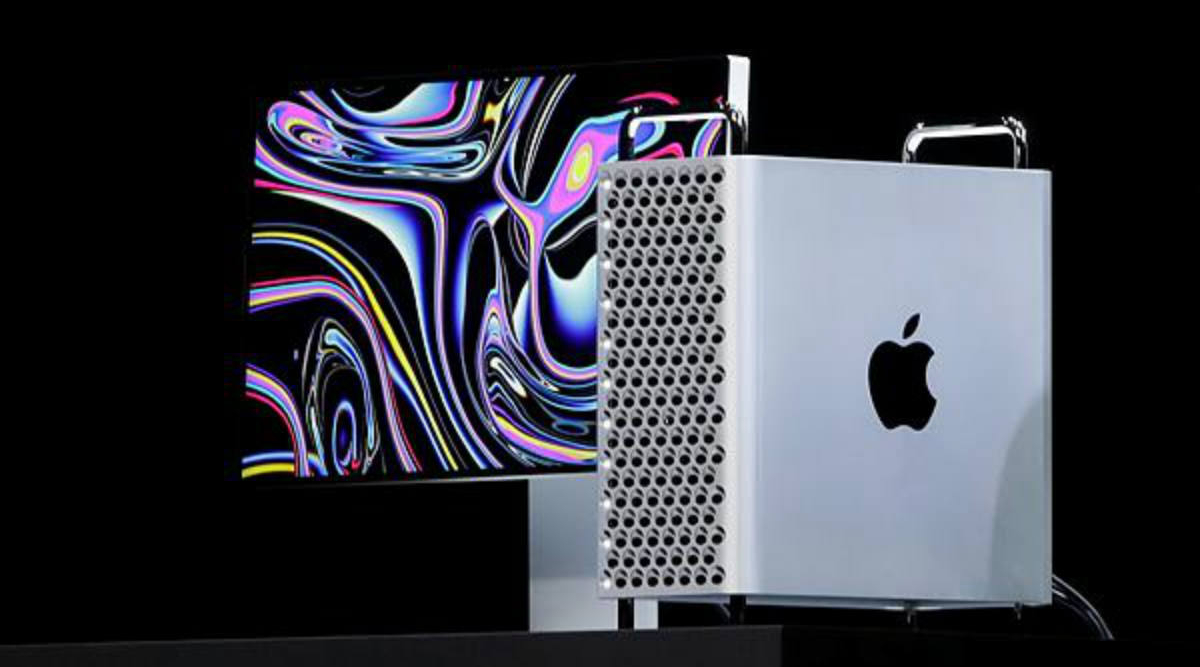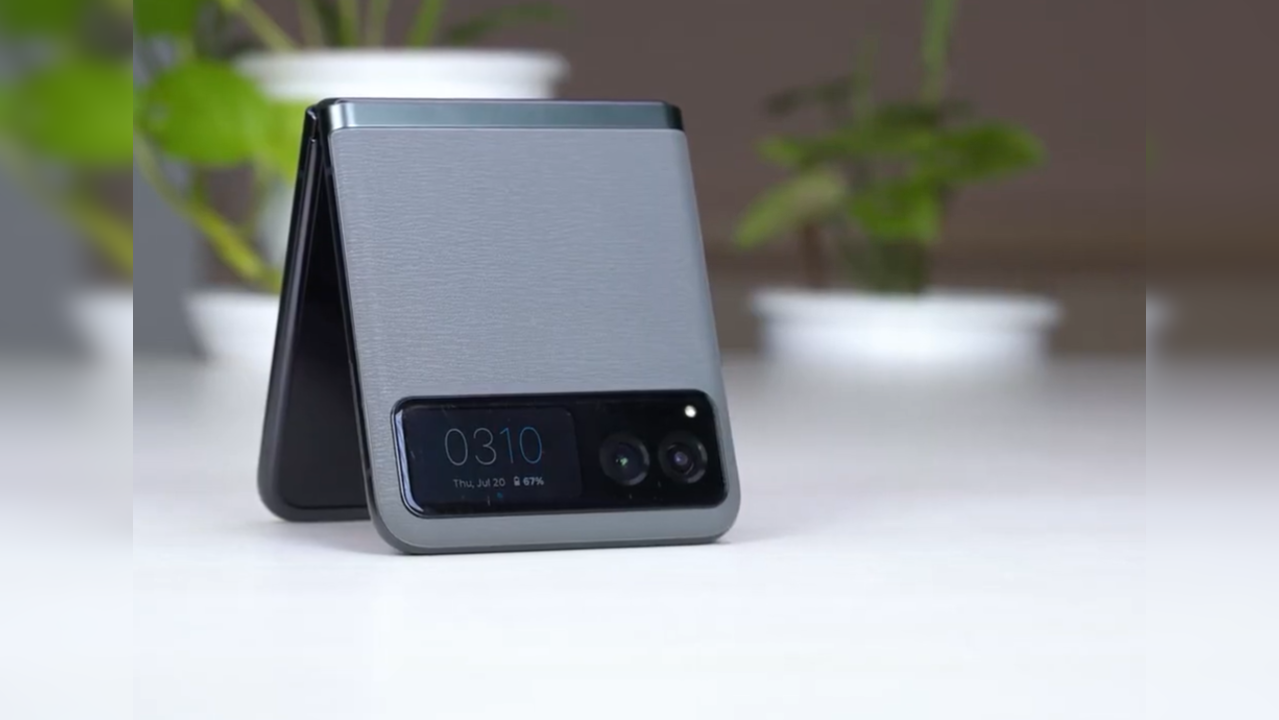
Apple’s Worldwide Developers Conference, or WWDC, perhaps the second most anticipated tech event after the company’s fall product showcase, has always been known for focusing on its core platforms and software. But the biggest developer-centric event has also been the launchpad for many high-profile hardware products over the years, including the HomePod and Mac Pro. Although it is not necessary for Apple to use this year’s developer conference to launch new hardware products, speculation is rife that we may see updates to the MacBook Pro lineup.
Must read: WWDC 2021: What to expect and what not to
With WWDC 2021 set to kick off tomorrow, we thought to look back and revisit some of the hardware announcements made by Apple at its biggest software event of the year.
Power Mac G5 (2003)
Introduced at WWDC 2003, the Power Mac G5 has a glorious history. Not only did it feature a “cheese grater” grille on the outside but the Power Mac G5 was the most powerful Mac of its time. In fact, the PowerMac G5 remains Apple’s best-designed Mac to date. Designed for professional users and graphic designers, the G5 used the PowerMacG5 processor, the first 64-bit processor to be used in a personal computer. It also came with powerful graphics and support for up to 8GB RAM. But since the device carried a powerful processor inside, the challenge for the team was how to cool down the PC. To solve the problem of overheating, Jony Ive designed a new case design for the G5, featuring a number of holes in the front and back. The design of the G5 was key to the performance of the machine, as the device had nine active fans. The case was made out of aluminum with the handles at the top and bottom, a major departure from Apple’s previous pro-level desktop designs. The PowerMac G5 received updates until 2005.
Aluminum Cinema displays (2004)
While WWDC 2004 was mostly focused on Mac OS X Tiger, Apple did introduce the classic aluminum cinema displays, including the massive 30-inch model. The new premium displays had a one-piece aluminum design and featured dual USB 2.0 ports and dual FireWire ports, and Digital Visual Interface (DVI). Available in 20-inch, 23-inch and 30-inch screen sizes, the latter had a “professional-quality, wide-format active-matrix LCD” with a resolution of 2560×1600 pixels. The 30-inch Apple Cinema HD display was only compatible with the Power Mac G5 as it required a new Nvidia GeForce graphics card in order to work. The 30-inch Apple Cinema HD display had a sticker price of $3299.
Mac Pro (2006)
In 2006, Apple unveiled the first Mac Pro, the company’s high-end desktop computer for pro users. It was essentially the Power Mac G5 but with Intel Woodcrest processors that were based on Core technology. While from the outside the Mac Pro might look like the Power Mac G5, it had redesigned interiors with access to hard drives, RAM slots, and PCI cards. The base version of the Mac Pro which started at $2499, featured a dual-2.6GHz Xeon dual-core Mac Pro with 1GB RAM, Geforce 7300 GT (256 MB VRAM) graphics, and a SuperDrive.
iPhone 3G (2008)
At WWDC 2008, the iPhone 3G was introduced with a lot of fanfare. The biggest draw to get the iPhone 3G was of course 3G connectivity and lower price. Sure, the new iPhone came with curved plastic back over the flat aluminum back and plastic bottom of the original iPhone but that move helped Apple to lower the cost of the iPhone 3G. However, the biggest improvement added to the iPhone 3G was its ability to support 3G. Not only that, Apple’s second iPhone ran on a new mobile operating system called iPhone OS 2. The new mobile OS featured a better mail app, turn-by-turn navigation and most importantly, the App Store. No one, including Apple, had any idea that the App Store would change the iPhone and the smartphone market forever. Upon the arrival of the $199 iPhone 3G, the device was declared hit. Apple sold over 1 million units of the iPhone 3G in the first weekend alone.
iPhone 3GS (2009)
During WWDC 2009, the iPhone 3GS was announced as the successor to the iPhone 3G. Although it looked just like its predecessor with the same plastic back on the rear, the new iPhone was much faster and also came with a 3MP camera capable of recording video. Apple also introduced a voice control feature alongside a cut, copy, and paste feature in iOS 3. But that year’s Apple’s developer conference also saw spec upgrades for the 15-inch and 17-inch MacBook Pro models. The 13-inch MacBook was called “Pro” after being updated with better specs.
iPhone 4 (2010)
Perhaps the most hyped device of its time, the iPhone 4 continues to impress collectors and fans. The iPhone 4 brought a significant redesign for the iPhone and introduced a new design language, a combination of stainless steel and glass. The iPhone 4 was nothing less than an engineering marvel. Covered in glass and its flat look made the iPhone a lot different from previous generation models. With the iPhone 4, Apple also introduced the retina display and a front camera with FaceTime.
15-inch MacBook Pro (2012)
WWDC 2012 saw the launch of the 15-inch MacBook Pro, a professional laptop squarely aimed at musicians and graphics designers. During the presentation, Apple’s then marketing head marketing Phil Schiller said “we wanted a next-generation MacBook Pro to have a killer new display…we wanted to have an architecture built for the future.” True to Schiller’s words, the new 15-inch MacBook Pro was indeed thin and light and featured a retina display. Described as the “most beautiful computer” the 15-inch MacBook Pro was powered by a quad-core i5 or i7 processor from Intel and a new Kepler graphics chip from Nvidia. It started at $2199. In addition to the next-generation MacBook Pro, Apple also updated the MacBook Air.
Mac Pro (2013)
“Can’t innovate any more, my ass,” said Schiller in a keynote presentation while unveiling the brand new Mac Pro during WWDC 2013. Nicknamed “the trash can” Mac Pro, the device was pitched as something entirely different, a new type of professional desktop computer from Apple in black aluminum with an eye-catching cylindrical design. “It is a Mac unlike any we’ve ever made,” he said. “It delivers so much more performance capabilities and expansion than anything we’ve made. The team has packed all this capability inside 1/8th of the volume of the previous generation.” While the 2013 Mac Pro was a masterpiece in design, it was a complete failure from delivering what Apple initially promised. In fact, the lack of expandability and poor cooling annoyed many professional users, all because of the design of the device. Apple itself admitted that the computer was a mistake. The biggest learning from the “trash can” Mac Pro is that sometimes one has to look beyond the cool design to meet the power and performance needed to accomplish tasks.
HomePod (2017)
The reveal of the HomePod at WWDC 2017 was the biggest tech news of that year. Apple was making a smart speaker but not ordinary smart speakers like the Amazon Echo: a premium-sounding smart speaker for the home. But despite a promise of better sound and design, the HomePod wasn’t the hit Apple was looking for with its debut smart speaker. The HomePod suffered from many of the same issues as 2006’s iPod Hi-Fi including a high price tag. Earlier this year Apple permanently discontinued the HomePod, and while the news was less shocking, it made it clear that mainstream consumers weren’t looking for a smart speaker like this.
iMac Pro (2017)
Although it wouldn’t be right to call the iMac Pro a failure, it was seen as a filler between the 2013 Mac Pro and the 2019 Mac Pro. While the iMac Pro was touted as the most powerful Mac for creatives in 2017, with no updates being released by Apple over the years, the all-in-one desktop computer was left on its own. Not to say the iMac Pro was an odd device — yes, very expensive starting at $4999 but it lost its exclusivity considering Apple also offers a 27-inch iMac model and a Mac Pro. The latter two Macs are, again, targeted at professional users. Logically, if someone is willing to spend upwards of $5000 on a Mac, the Mac Pro would be a better fit. Apple’s decision to discontinue the iMac Pro earlier this year was more likely due to the lack of clarity on what Mac aims to achieve in 2021.
Mac Pro (2019)
In 2019, Apple used WWDC to announce the new Mac Pro, which starts at $5999. Soon after the announcement of the Mac Pro, jokes and memes started to flood all over the internet. While Twitterati mocked Apple for charging $5999 for the Mac Pro (oh, by the way, the computer does not include a display. Users have to shell out $4999 for the 6K Pro Display XDR), both the computer and display were exactly what developers and graphics designers were looking for in a pro-level desktop device. The Mac Pro was a complete redesign with a focus on sheer performance and with the aim of satisfying professional users. The cheese grater look and a traditional tower design helped Apple win back the users that were pissed off with the 2013 Mac Pro.
History of hardware at WWDC: Every device launched at Apple’s developer conference in the last few years - The Indian Express
Read More

No comments:
Post a Comment